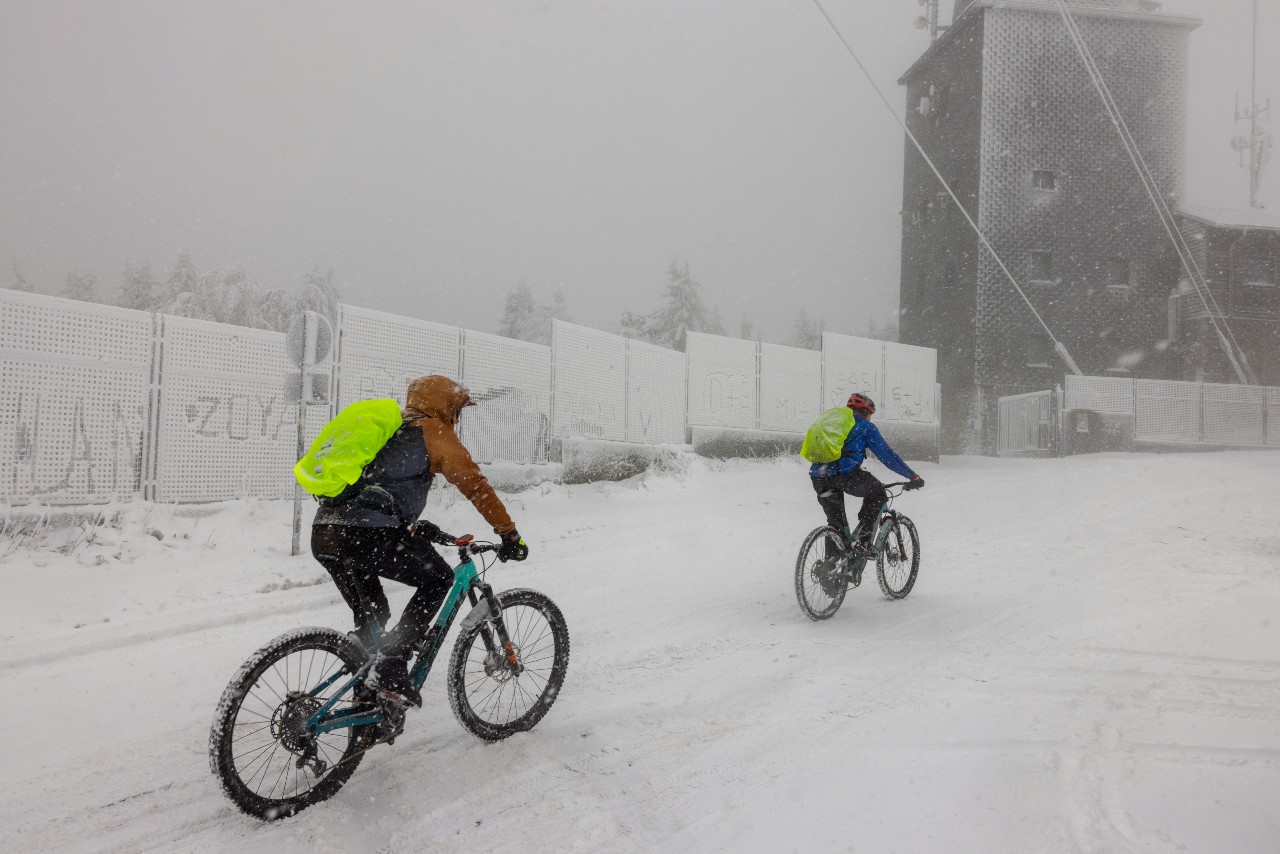Winters in Germany are notoriously unpredictable, which can make this a hazardous time for even the hardiest of cyclists. Whether it’s icy roads in the morning or pitch-back dark in the evening, the colder months are a time to take extra care while out and about on your bicycle – especially with these five ground rules.
But let’s start with the basics: why would you even want to cycle in winter in Germany? Aren’t there such things as U-Bahns and warm cars?
Well, yes, but it’s worth pointing out that those hardcore cyclists donning their thermals in the winter months aren’t all simply masochists looking for a way to get frostbite. Cycling has numerous health benefits, from strengthening your bones to improving your cardiovascular fitness, and by opting for your own two-wheeled transport in the winter months you’ll get the exercise and time in the outdoors that is vital to your mental health.
READ ALSO: Will Germany’s motorists and cyclists ever learn to live with each other?
Getting to work on your own steam with a fresh burst of endorphins first thing in the morning is the perfect way to start your day – and certainly beats sitting shoulder-to-shoulder with other commuters in a damp and stuffy U-Bahn train.
That’s without even considering that cycling is one of the greenest and most affordable modes of transport there is.
So, if you want to feel like an eco superhero and give your mood a lift in the winter months, follow these simple tips – some of which we discussed on the Germany in Focus podcast – for (relatively) stress-free winter cycling in Germany.
PODCAST: Christmas markets in Germany and how did things get so bad at Stuttgart immigration office?
1. Invest in warm accessories
Cycling in sub-zero temperatures may not sound too appealing, but the physical exercise does warm you up on the way. That said, parts of your body can get really cold while you’re whizzing around in winter – so it’s worth investing in the gear you need to stay warm.

As a rule of thumb, your extremities – so hands, feet and head – are going to get coldest when you’re on your bicycle. That means that you’ll need to don high-spec gloves and nice thick socks as soon as the mercury starts to drop.
If you wear a helmet (which is also a good idea in winter), you can make ti warmer by wearing a snood or a hat with earflaps under it, as well as a scarf that can be pulled right up past your chin.
READ ALSO: Riding the Radweg: A guide to touring Germany by bike
2. Try and take the back paths
If it’s icy on the roads, your best bet will be to take the road less travelled – quite literally. Areas with thinner levels of traffic tend to be much safer, so it could be worth considering a slight detour if you can avoid a busy road.
If you’re unsure about the best routes for cyclists, apps like Komoot and Bikemap can help you identify areas with the safest streets, fewest hills and most extensive cycling infrastructure – and if you’re lucky, you may even find a good short-cut.
Some German cities like Berlin also have interactive maps of their cycling infrastructure available online.
3. Make sure you’re visible
One of the worst parts of cycling during the German winter is the seemingly endless darkness – especially if you’re going to work early in the morning and leaving after sundown.
On the shortest day of the year, sunrise doesn’t start until around half past eight in the morning and it’s sunset before 4pm, giving you around eight hours less sunshine than during the summer solstice.
All of this doesn’t mean you have to leave the bike at home, but it does mean you should make an extra effort to stay visible. Good bike lights that will last you are well worth the money – and be sure to recharge them or change the batteries regularly.
For better visibility, a high-vis vest can also be a great idea, or armbands with reflectors on them. On the subject of reflectors, you’ll also need those in your wheels: it’s red at the top and white or yellow in the spokes.
READ ALSO: Cycling in Germany? These are the fines you should know about

4. Get advice on winter tyres
Drivers change their tyres in winter, so why shouldn’t cyclists worry about their tyres in the colder months as well? Even if it doesn’t snow every day, it’s certainly worth knowing that your bike and wheels can handle most of what nature might throw at them.
That’s why stopping in at your local bike repair shop for a service or some advice is a good idea as soon as the weather turns colder. Any good bike mechanic will be able to check that everything’s working as well as it should be and will also have a sense of whether your bike frame and tyres are suitable for cycling in winter.
And while we’re on the subject of tyres, a mudguard is your absolute best friend in winter – unless you enjoy turning up to work with mud splattered up the back of your jacket.
5. Avoid cycling in fresh snow
If there’s one thing that’s pretty much guaranteed in winter, it’s snow – and slippery, icy roads can be a cyclist’s worst nightmare.
To be on the safe side, try and avoid cycling in fresh snowfall or during a snowstorm when the visibility is poor.
Though the German Winterdienst tends to be relatively speedy at gritting the roads, there may a bit of a lag when it’s still very dangerous to cycle.
The same goes for permafrost that may settle in when you have sub-zero temperatures for a few days after snowfall. In these cases, try and stay abreast of any traffic or weather warnings from the German Weather Service (DWD) and continue to cycle carefully whenever temperatures drop below freezing.




 Please whitelist us to continue reading.
Please whitelist us to continue reading.
Member comments